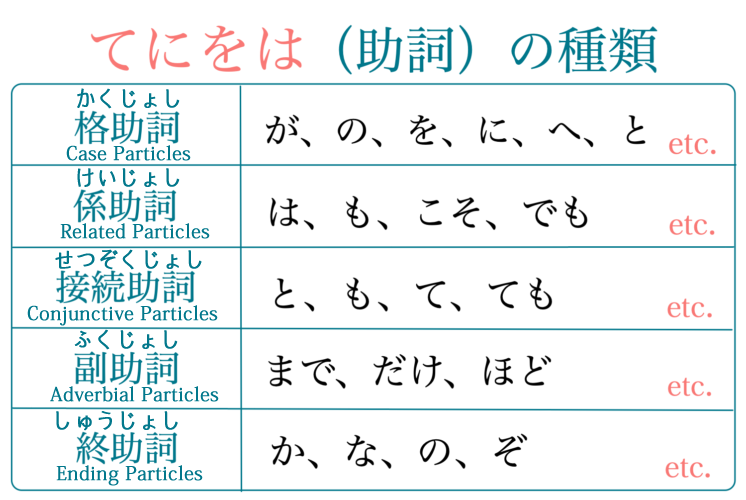Particles are referred to as 助詞”joshi” or てにをは”tenioha” in Japanese.
In a Japanese phrase, these one-syllable building components come following a noun, verb, or adjective. Each of these words is modified by them, reflecting the word’s function in the sentence. The main Japanese particles, their functions, and their appropriate applications will all be covered in this article.
In the Japanese language, various particles are used to indicate the grammatical function of words and phrases within a sentence. These particles play an important role in clarifying the relationships between different elements in a sentence. Here are some commonly used particles along with their meanings and examples:
1.は (wa): This particle is used to indicate the topic of a sentence. It does not necessarily indicate the subject of the sentence but rather sets the topic for discussion.
Example: 私は学生です。(Watashi wa gakusei desu.) – As for me, I am a student.
2.が (ga): This particle marks the subject of a sentence, indicating who or what performs the action.
Example: 彼が来ました。(Kare ga kimashita.) – He came.
3.を (wo): This particle marks the direct object of a verb, indicating the target of the action.
Example: 本を読みます。(Hon o yomimasu.) – I read a book.
4.に (ni): This particle has multiple uses. It can indicate a target, destination, direction, time, or location.
Example 1: 学校に行きます。(Gakkō ni ikimasu.) – I am going to school.
Example 2: 三時に会いましょう。(Sanji ni aimashō.) – Let’s meet at three o’clock.
5.で (de): This particle is used to indicate the location where an action takes place or the means or method by which an action is performed.
Example 1: 公園で遊びます。(Kōen de asobimasu.) – I play in the park.
Example 2: 電車で行きます。(Densha de ikimasu.) – I go by train.
6.へ/に (e/ni): These particles indicate the direction or goal towards which an action is directed.
Example: 美術館へ行きます。(Bijutsukan e ikimasu.) – I am going to the museum.
7.と (to): This particle is used to indicate a partner or companion with whom an action is performed or a quotation in reported speech.
Example 1: 友達と食事に行きます。(Tomodachi to shokuji ni ikimasu.) – I am going to have a meal with my friend.
Example 2: 彼は「こんにちは」と言いました。(Kare wa “konnichiwa” to iimashita.) – He said, “Hello.”
These are just a few examples of commonly used particles in Japanese. There are many more particles with specific functions and usages. Mastering the correct use of particles is essential for constructing grammatically accurate and meaningful sentence structure in Japanese.

